Home
4×4 Bar/Sumo Bar
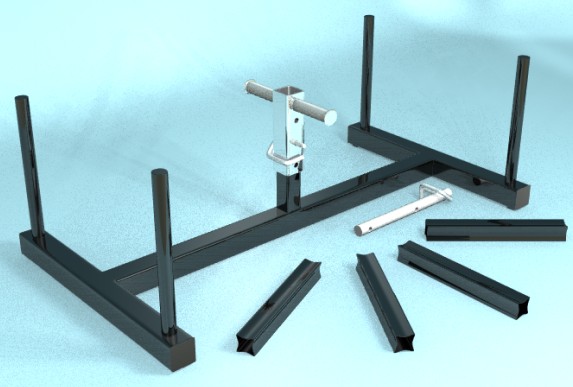
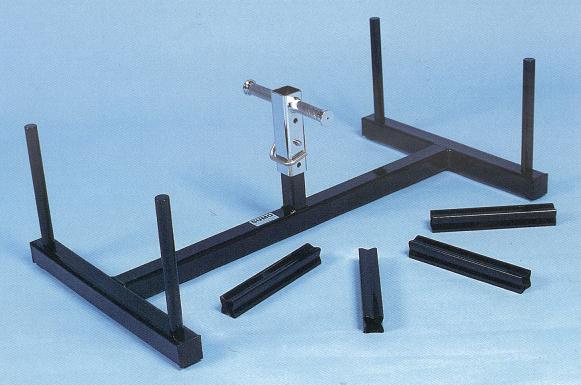
Partials
The 4×4 Bar/Sumo Bar lead to the most productive exercise I have used. It took me from lifting nothing to picking up the back of cars and hefting 1000-lb loads!
It started by accident. I'd invented the Power Rack which you see elsewhere in these webpages. I decided to test the rack with heavy weights by doing partials. With a straight bar in the Power Rack I worked up to 296 kg Sumo with the bar starting at 455 mm high. At that point I ran out of bar space for weights.
I liked the sumo lift but I couldn't get enough weight on the bar and I didn't like it scraping up my shins... so I invented the 4×4 Bar/Sumo Bar.
I then worked up to 525 kg on the 4×4 Bar/Sumo Bar from 520 mm handle axis height (with an 1100 mm stance), i.e. a superheavy partial.
Funnily enough people had been saying for years that partials were for 'advanced' lifters. It turned out that this was utter rubbish. Partials are even more basic than the 'basic' lifts. A full deadlift maybe basic but doing a partial is even more basic because it requires less ability to get into a stretched position and requires less negotiation of changing strength curves. In short it is 'easier' to perform a partial because it is less 'technical' than a full move. This means greater effort can be put into producing force.
Before the form police jump on me, yes of course full lifts are needed. One will not get strong at full lifts without training full lifts. But it also works in reverse you won't get strong at something by not doing it. In other words you won't get as strong as you can at partials by doing fulls...
This is the essence of sports training, its all about transfer - you get strong at the things you do but also get strong at similar things. If you only do the things that you do you eventually stall so you do similar things to stall the stalling, which means constant periodisation, cycling, programming, change... but you need to do the same things to adapt to them but you need to change.
Principle
The 4×4 Bar/Sumo Bar has a short handle instead of a long bar so there is nothing to scrape up the shins, the knees can come forward of the bar line and assume the strongest position. By having 4 weight holders the centre of gravity of the device is always below the handle and below the lowest hole on the device. This means the 4×4 Bar can't tip over, it hangs under the handle the same way a bucket of sand hangs below its handle.
Unlike a deadlift the arms are braced against the body especially with short range partials, this adds to the torso support enabling even bigger weights to be lifted. To lift bigger weights requires greater muscle force and this produces greater gains.
Doing just partials from the same height and stance width would be physiologically boring, so the device is adjustable in 25 mm increments and the stance can, of course, be adjusted from narrow to wide.
Specs
- Yield Stress 747.6 kg (1648.2 lbs)
- Length 1000 mm, width 545 mm, height 321 mm
- Handle height 225 mm to 375 mm(25 mm increments)
- Stance (outside of foot) from ~550 mm or greater
- Chrome (copper-nickel) plated handle
- Gloss black powder coated frame
- 4 Olympic adapters
- 1 stainless (304) steel pin
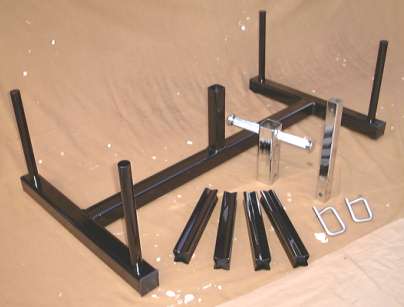
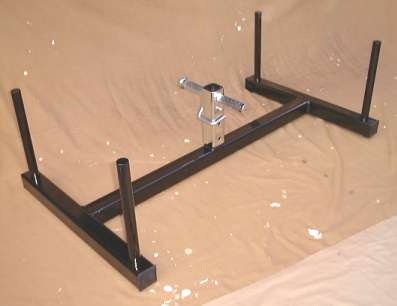
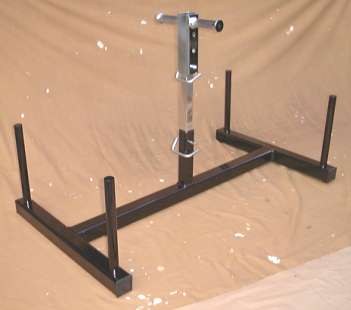
Examples




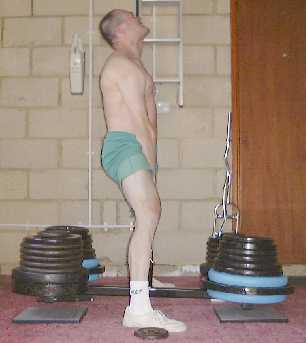
The Benefits
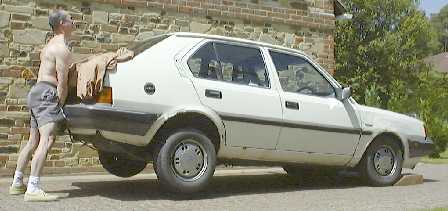
25th November 2023